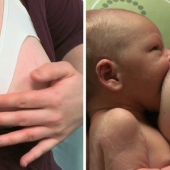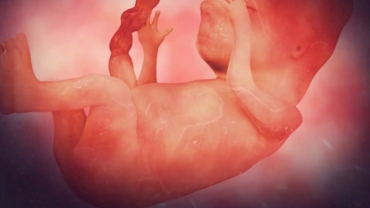Photo credits: Badass Birth Photography
Meconium is a thick, green tar-like substance that lines baby’s intestines during pregnancy. Normally meconium is seen once baby is born, however occasionally baby can pass meconium whilst still in the uterus.
Photo credits: Kayla Grey, Birth Photographer
Sometimes "show"/mucus plug can contain older blood which can look like brown streaks through the waters. If you are concerned about the colouring, you can take a photo of any pads to show your midwife when being checked over.
Photo credits: Carbon+West Birth Services
It’s important to note that - meconium stained waters is not only normal but very common if you have gone well past your due due date. This is because baby's digestive system has matured enough and it has already started to function, even if they haven't been born. Resulting in the meconium passing through into your waters. After 42 weeks, 30-40% of pregnancies will have meconium-stained amniotic fluid. There is a belief that meconium in baby's waters is a sign that they are severely distressed. However, this is a theory that has not been proven.
Photo credits: Little Rose Photography
Most babies who become distressed in labour do not pass meconium in utero and most babies who do pass meconium show no signs of distress. Regardless, in view of this theory, most babies who pass meconium will be treated as if they are distressed. This is due to care providers believing that meconium stained amniotic fluid can cause a rare condition called "Meconium Aspiration Syndrome". This is when a baby inhales the meconium into their lungs during birth and can cause serious complications. (I plan do another blog post soon explaining this more thoroughly).
Photo credits: Victoria Berekmeri
If it's confirmed to be *significant* (dark green, lumpy, black) meconium and baby is showing signs of distress, your maternity care team will want to discuss your options for birth. It's likely they will strongly recommend birthing on a labour ward with continuous monitoring of baby using a CTG machine. These recommendations are based on common practice rather than research evidence.













